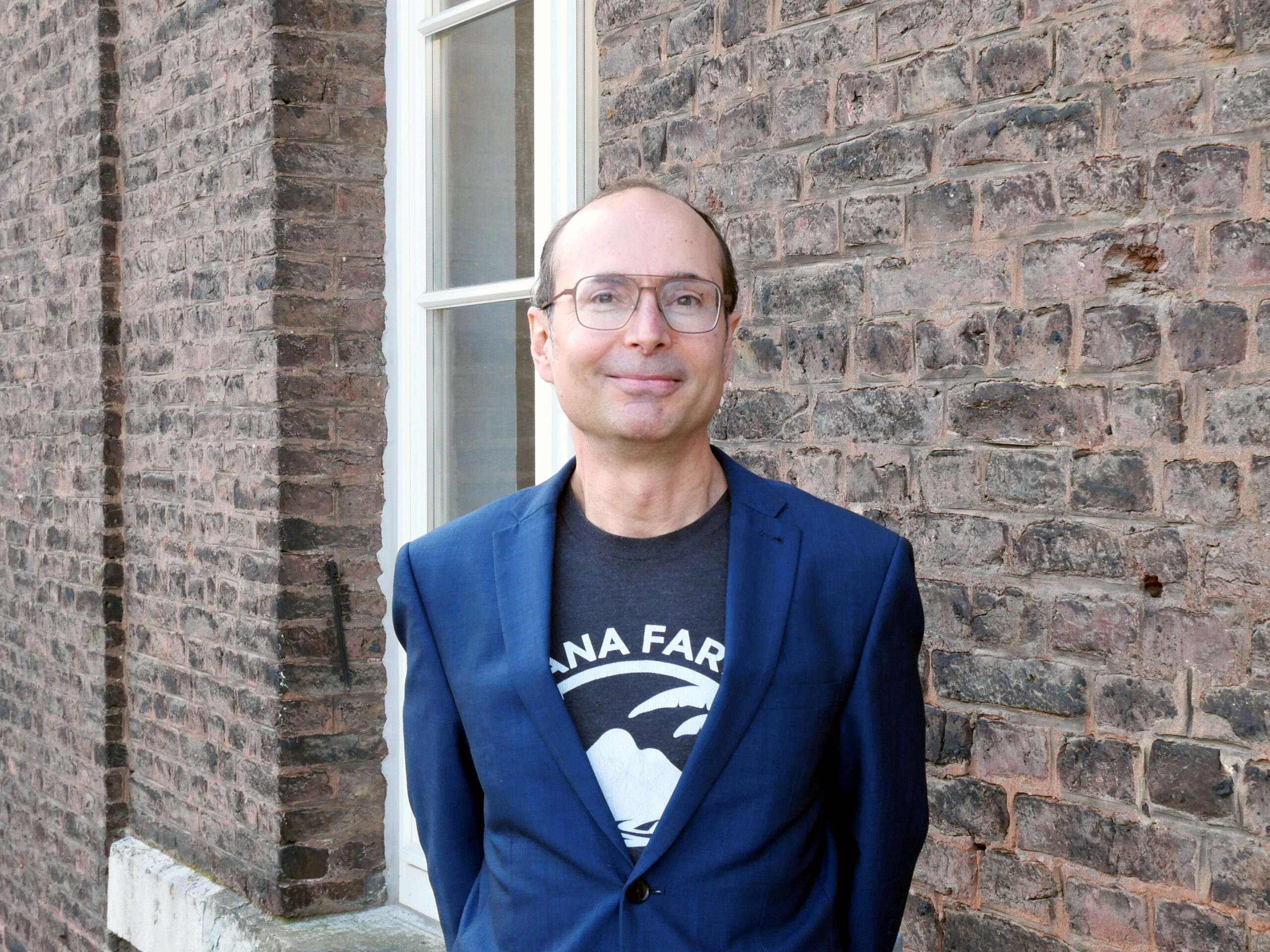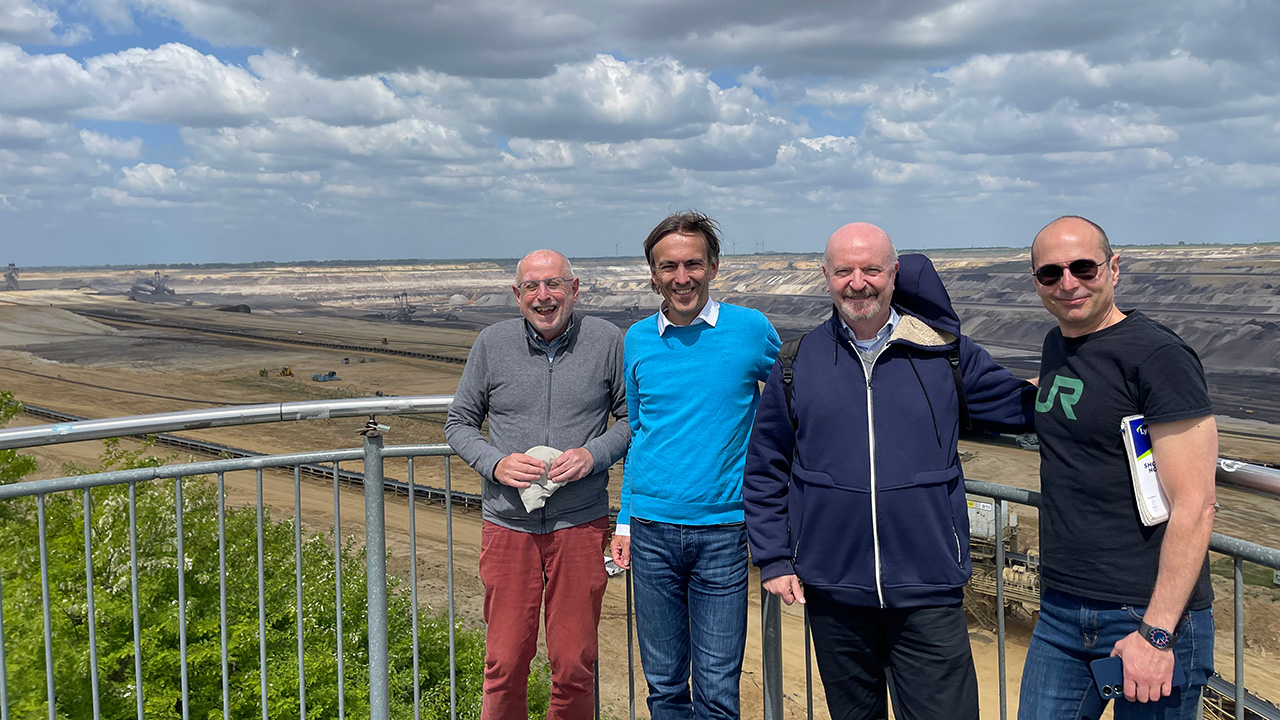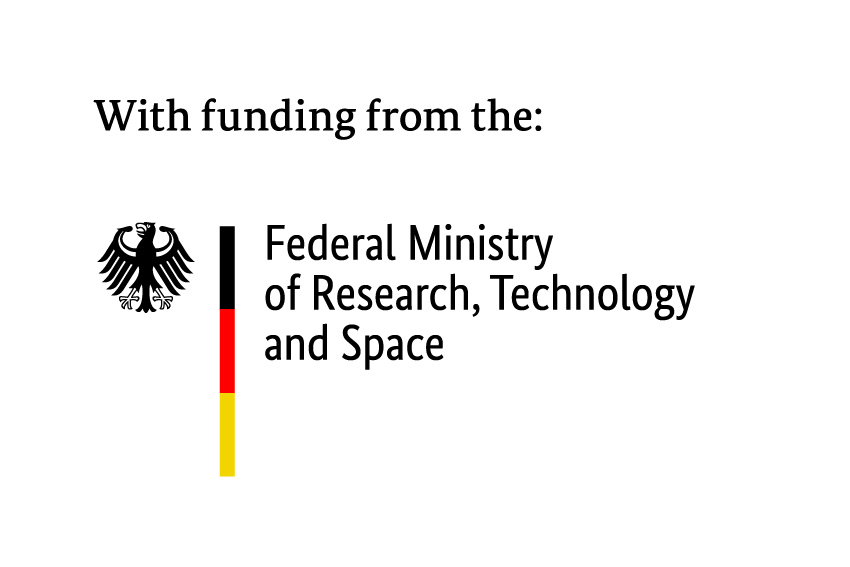MATTHEW N. EISLER
In the Rhenish mining-industrial complex, the past, present, and future of geological and human time intersect. Over 30 million years, intertwined processes of evolutionary biology and geo-biochemistry produced thick seams of brown coal in the region now known as the Cologne Bay (Kölner Bucht) that began to be intensively mined from open pits from the late eighteenth century. As elsewhere, coal-based industrial enterprises enabled asymmetrical social development and came with environmental costs that human beings sought to mitigate with increasingly elaborate infrastructures of waste management. The resulting hybrid ecosystems exist in a state of fragile balance that requires constant effort to maintain, as a mid-May field trip to the Garzweiler and Hambach mines illustrated.

Matthew N. Eisler
c:o/re Fellow 01/25 – 12/25
Matthew N. Eisler is a lecturer in the Department of Humanities at the University of Strathclyde. He researches how ideology and policy inform practices of energy and materials conversion and shape social relations and environments.
I am a historian of clean and green technology and have become interested in the historical sociology of the “green work” of environmental mitigation, a project I am developing as a KHK fellow. I was curious to hear the perspectives of my companions on this question. The field trip was led by the retired hydrogeologist H. Georg Meiners, joined by Lars M. Blank, head of RWTH Aachen University’s Institute of Applied Microbiology, and Victor de Lorenzo, RWTH Kármán-Fellow and professor of research in the Spanish National Research Council (CSIC), where he heads the Laboratory of Environmental Synthetic Biology at the National Center for Biotechnology. Georg spent much of his career investigating how the lignite mines affect local water quantity and quality while Lars and Victor research microorganisms capable of metabolizing industrial waste. They were eager to get out of the laboratory and lecture hall and into the field to see just what the microbial world is up against.

What we found was a vast “organic machine,” a term coined by the historian Richard White to connote large-scale industrial infrastructure in its ecological context. If the history of environmental mitigation can be characterized by a single phenomenon, it is ‘displacement:’ solve one problem and another pops up elsewhere unexpectedly. In the Rhenish mining complex (Reinisches Braunkohlerevier), we witness a cascading series of displacements. A key set of problems issue from the high sulphur content of lignite. In the 1970s and 1980s, lignite-burning German industry emitting sulphur dioxide and nitrogen oxides caused acid rain in faraway Sweden. Fitting power plants with scrubber technology fixed that problem but did nothing to mitigate emissions of climate-changing carbon dioxide. Moreover, sulphuric mine tailings can acidify soil and ground water. To neutralize this form of pollution, miners mix lime into the spoil.
Managing such problems is complicated by the vast scale of open cast mining. Garzweiler is an artificial canyon, and canyons can shape airflow and create their own weather systems. Georg had warned us to bundle up because it would be windy, and at Garzweiler, that wind is harvested as a resource. Energy planners have ringed the mine-canyon with dozens of giant wind turbines, exploiting an unintended ecological consequence of this industrial enterprise.
These winds cause numerous accidents on nearby motorways and also stir up particulates, a less-discussed problem of open cast mining, observes Lars. At Garzweiler’s eastern rim, where overburden is slowly processed into massive lime-laced mesas by giant earthmovers, a bouquet of hoses spray thousands of liters of water a minute in an effort to tamp down dust. But it is impossible to water all of the 40 square kilometers of the mine’s operating area. Scrubby vegetation growing atop the reclamation mesas fixes some of the particulate matter into place and I wonder aloud if this brush belt will grow into a green lung. Georg responds that this proto-forest is only an interim measure that will disappear according to the master mitigation plan of the terraformers of the Cologne Bay. From the 2030s on, the mine-canyons will be decommissioned and filled with water diverted from the Rhine, creating deep lakes in a project that could take until the end of the century and has many unknowns.
A less visible but equally problematic effect of the mine is on the realm of subterranean water. Garzweiler is surrounded by a vast network of wells, pipes, and pumps working constantly to lower the water table to enable coal excavation. This is a delicate operation. If the pumped water is not properly reinfiltrated back into the ground, says Georg, local forests, streams, lakes, and the underground springs for which the Aachen area is famous could be damaged or even destroyed.
The Cologne Bay is also a rich and important agricultural region that has become contested terrain in an unequal clash between industrialism and eco-activism. For a century, the mining enterprises followed the coal seams, and their historical progress, as depicted on topographic maps, resemble channels carved by giant coal-hungry worms munching their way through the landscape. These “wandering mines” have destroyed a number of farm communities in their path.
We visit the village of Keyenberg, a flashpoint in high-profile regional demonstrations against mine operator RWE in 2021 that became a monument to the uneven pace of environmental progress. Keyenberg is a ghost village. From the mid-2010s, it was slated to be engulfed by the Garzweiler mine and began to depopulate but when energy planners decided to phase out lignite, the abandoned village was left intact. Today, the place has the uncanny feel of a Chernobyl-like exclusion zone. A sign on one house reads “zu verschenken,” or in English, “to give away.” Such houses can be obtained for free, at the price of fixing them up and living near a windy and dusty mine-canyon. Georg says there is talk of housing war refugees here, and amidst the boarded-up buildings there are signs of life. One person, perched on a scaffold, repairs a house that boasts a well-tended hydrangea garden, activities suggestive of yet another form of green work heralding Keyenberg’s possible revival, or reincarnation.
The ongoing management of some of the wandering mine’s wastes, the conversion of its windy microclimate into clean energy, and the gradual reclamation of a portion of its disrupted hinterlands poses the conundrum of how to interpret the co-construction of such awesome desolations and their ingenious eco-infrastructures of life support. Contemporary environmental discourse imposes a dualistic moral-ethical framework of good (green) and bad (non-green) behaviors against which we are supposed to judge ourselves and others, declare a position as optimist or pessimist, and offer normative visions in a calculus that, as some argue, has centered generalized global processes over diverse local experiences of environments and environmental despoliation.
The case of the Rhenish coal belt calls attention to a particular set of conflicts, contradictions, and puzzles, and what the environmentalist Val Plumwood called “shadow spaces,” occluded from our subjective ecological visions, that invite further investigation. Human history would seem to vitiate the prospect of circumspect do-no-harm environmental activism advocated by the philosopher Arne Naess. In the imagined perspective of geological time, human beings might be perceived as acting in a near-simultaneous spasm of furious environment-altering activity.
It seems to me that the path to the kind of wise interventions Naess had in mind starts in gaining awareness of the perversities and paradoxes of myriad local projects of environmental mitigation. Understanding how human beings build organic machines like Garzweiler and its environs, learn how these strange ecologies operate as amalgams of human and natural agency, and live with the consequences might be a modest but necessary prelude to deciding the next set of mitigating moves.
I thank Georg Meiners for hosting and guiding this event and reviewing a draft of this essay, and Victor de Lorenzo and Lars Blank for enriching the experience with their insights and companionship.



